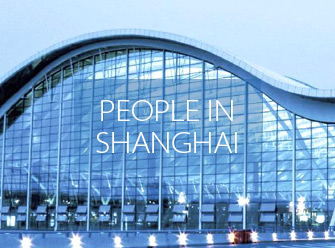New satellite terminal at Pudong opens
The structure, world's largest, will help Shanghai handle 80 million passengers
The addition of a new satellite terminal to Shanghai Pudong International Airport is set to greatly help air passengers and improve transfer efficiency at one of the world's busiest aviation hubs, said officials from the Shanghai Airport Authority.
The structure - the world's largest satellite terminal building - became operational on Monday. It is located in the south of the airport's existing terminal 1 and terminal 2.
The 620,000-square-meter terminal, with 90 boarding bridges, is expected to handle 60 to 70 percent of the airport's total flights.
Passengers departing from the new structure check in at the two older terminal buildings and then take a two-and-a-half minute subway ride to the new facility.
"It will greatly enhance the airport's boarding efficiency," said Hu Zhihong, general manager of Shanghai Pudong International Airport. "Only about 10 percent of passengers, down from 50 percent before the use of the terminal, will need to take shuttle buses."
Ye Yuquan, deputy general manager with China Eastern Airlines' ground service division, said only about 35 percent of China Eastern's flights at the Pudong International Airport could be accessed via boarding bridges before.
"The new satellite terminal is expected to increase that figure to 100 percent," Ye said.
Italian passenger Andrea Angelici was one of the passengers who took the first international flight from the new terminal to Rome, Italy.
"It is one of the best I have visited until now," he said.
Shanghai's two airports had become overburdened with passengers and cargo in recent years. Together, they handled nearly 118 million passengers in 2018, making Shanghai the world's fourth busiest aviation hub after London, New York and Tokyo.
With the new terminal, Pudong will be able to handle 80 million passengers annually, said Guo Jianxiang, vice-president of East China Architectural Design & Research Institute, who led a more than 100-member design team for the satellite terminal project since 2014.
Shanghai's two airports are now operating four terminals along with the new satellite terminal, six runways, five cargo areas and a total of 435 parking stands, allowing the city to handle 120 million passenger trips and 5.2 million tons of cargo per year, said Xie Feng, head of the Shanghai Transport Commission.
The H-shaped satellite terminal is a function-centered building with practical use and customer experience as its priority. "At the same time, it's a mix of both local and international," added Guo.
The terminal provides more than 28,000 square meters of commercial space, of which nearly 10,000 square meters comprises the duty-free zone.
The satellite terminal is also a world-class green terminal that will help save 9.95 million kilowatt-hour of power and 216,000 tons of water, reduce vehicle fuel consumption of 1,623 tons and 39,000 tons of aircraft fuel, and cut carbon dioxide by 115,000 tons per year, according to Feng Xin, president of Shanghai Airport Authority.
According to Xie, the Yangtze River Delta region airports cluster master plan is still awaiting the central government's decision, but Shanghai will strive to enhance the development of Shanghai international aviation hub together with airports in cities, including Nanjing of Jiangsu province, Hangzhou of Zhejiang province, Hefei of Anhui province, Nantong of Jiangsu province and Ningbo of Zhejiang province.
"The development of city clusters in the Yangtze River Delta region requires the support of a comprehensive transportation system of air, rail, road and even water, both for passenger and cargo transportation," said Xie.
As the designer of many airports in the Yangtze River Delta region of Shanghai, Nanjing, Yancheng and Yangzhou of Jiangsu province, Hangzhou, Ningbo and Wenzhou of Zhejiang province, as well as the Belt and Road Initiative of Urumqi in the Xinjiang Uygur Autonomous Region, Guo said it is extremely important for coordination of the plans.
"In the future, Yangtze River Delta will be connected to a huge comprehensive transportation network. Therefore, it is extremely important for all the transportation solutions to collaborate with each other at high efficiency," said Guo.
 Contact Us
Contact Us

 New pedestrian street boosts Pudong's night economy
New pedestrian street boosts Pudong's night economy  Festival injects vitality into Shanghai's consumer market
Festival injects vitality into Shanghai's consumer market A journey through history
A journey through history Chinese roses bloom in Pudong
Chinese roses bloom in Pudong


